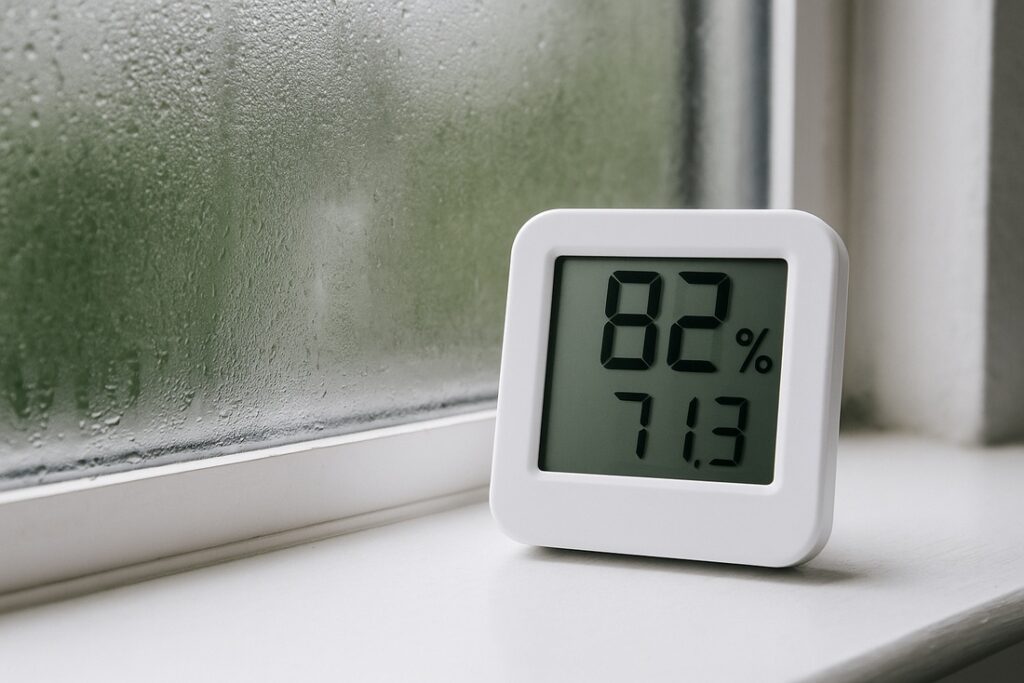Blog
High indoor humidity with AC running: causes and solutions

If you are dealing with high indoor humidity with AC running, you are not alone. Florida homes can feel sticky even while the thermostat shows the right temperature. The issue usually comes down to airflow, runtime, controls, or a fault that keeps the system from removing enough moisture. This guide explains the common causes, safe checks you can try today, and the fixes that actually work so the air feels crisp again.
What high indoor humidity with AC running really means
Air conditioners cool and dehumidify at the same time. Warm, moist air blows across a cold evaporator coil where water condenses and drains away. When humidity stays high, either the coil is not getting cold air long enough, the air is moving too fast across the coil, or something is blocking heat transfer and drainage. Watching when the sticky feeling appears helps. If mornings feel fine but afternoons are muggy, you may have a runtime or load issue. If the home feels clammy day and night, look for airflow and drainage problems first.
Common reasons for high indoor humidity with AC running
Short cycling cuts moisture removal.
If the system starts and stops every few minutes, it never stays on long enough to pull water from the air. Thermostat placement, a weak capacitor, or low refrigerant can all cause rapid cycling. If this sounds familiar, AC short cycling is the most likely culprit.
Fan set to On instead of Auto.
Fan On keeps air moving across a wet coil between cooling calls and can push moisture back into the ducts. Set the fan to Auto so it runs only during active cooling. This single change often improves comfort within a day.
Airflow is too high or too low.
Air moving too fast across the coil reduces dehumidification. Air moving too slow can cause the coil to get too cold and ice. Both leave extra moisture in the house. Replace a loaded filter, open all supply and return grilles, and keep doors open to key rooms. If air still feels weak or uneven, the coil may be dirty or iced. Our guide on Why Is My AC Frozen? explains what to look for and what to do next.
Dirty or matted evaporator coil.
A coil covered in dust or biofilm cannot transfer heat well, so water removal drops. You may also notice a stale odor. If you are smelling that musty AC smell you’ll need coil cleaning and clear drainage to restore clean airflow.
Drainage problems that re-evaporate moisture.
A partially clogged condensate line slows water removal and lets moisture sit in the pan. As air flows, that water can drift back into the airstream and raise indoor humidity. If the pan is full, the float switch may shut the system off entirely. See our post on an AC float switch tripped for safe steps that prevent water damage.
Duct leaks or unbalanced return air.
Leaky return ducts can pull humid attic or garage air into the system. A starved return also forces the blower to work harder and can drive up coil temperature. If certain rooms feel clammy while others are fine, this is worth checking.
Low refrigerant that hides until afternoons.
Slightly low charge may cool in the morning but struggle later, leading to longer runtimes with poor moisture removal. Only a licensed technician should set charge. The correct repair includes finding and fixing the leak.
Safe checks you can try today
Set the thermostat to Auto for the fan and pick a steady cooling setpoint instead of large swings. Replace the air filter with the correct size and rating. Open all supply registers and every return grille. Clear two feet of space around the outdoor unit so it can breathe. Look at the indoor drain pan with a flashlight. If you see standing water, turn the system off and schedule service so the line can be cleared. If the refrigerant line near the air handler is icy or the system has frosted up before, turn the system off to thaw and do not restart until a technician checks it.
When to call for help
Call if the thermostat is already on Auto but the house still feels clammy after a day or two. Call if you see frost on the refrigerant line, if the drain pan holds water, or if the system starts and stops repeatedly. Call if you suspect return leaks or if certain rooms never dry out. These are signs that a professional test is needed. A proper visit includes coil temperature checks, blower and static measurements, drain clearing, and a refrigerant evaluation. That is how you get past guesswork and fix the root cause of high indoor humidity with AC running.
Contact FL-Air Heating & Cooling
If your high indoor humidity with AC running will not resolve after the checks above, our team can diagnose the exact cause and correct it with clear pricing. We handle airflow problems, iced coils, drain clogs, and control issues across Tampa Bay. For fast help, contact us at 813-800-2665 and we will get you on the schedule with a real arrival window.








